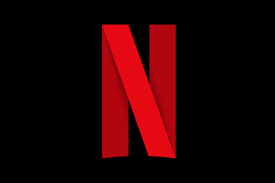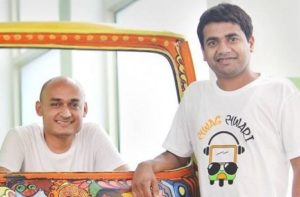Teaching America how to Code: Success Story of EPAM
EPAM Systems, Inc., better known as EPAM, is an international company offering software and IT related services. The company has a global presence with centres spread across North America, Asia, Australia and even Europe. EPAM is without a doubt one of the largest companies to emerge out of Belarus. So how did this IT giant spring from such humble backgrounds to become the world’s leading software consultation service provider? Here’s a look at what turned EPAM from just another novel idea to a thriving business.
About the Founder
Dobkin was born and brought up in Minsk, Belarus to a watchmaker father and medical assistant mother. His elder brother is an engineer, while his sister was a programmer with an innate interest in coding. Meanwhile, Dobkin attended the Byelorussian National University and graduated with an MS in electrical engineering. Shortly after college, he migrated to Russia and worked for software companies over there. Programming, Dobkin noticed always brought quick results, and so he realised that if he was going to grow, this was the field he needed to learn and explore.
He started his own programming business in 1991. By the time he was 31, he had emigrated without even knowing how to speak English with just $2000 in his account. But his dedication helped him as he learnt English on the job and he bought a car with his savings. He then got himself a job at Prudential, and he and his family stayed with his sister who was working as a programmer in the US. When his company collapsed, he contacted his childhood friend in Minsk and set up yet another software company. In the US, he continued working, switching from Colgate Palmolive to SAP Labs.
Together with his partner David Scott, he opened EPAM Systems’ first office on Emmons Drive while his daughters were in college and school respectively. As his clientele were mainly companies from the US and from Europe the financial collapse of Russia in 1998 did not affect EPAM. Slowly, yet surely, the company started to grow. Their first major client was the fashion brand Bally, which approached them looking for help building a Salesforce Automation platform for their North America-based operations.
Founding EPAM
EPAM was founded by Belarusians Arkadiy Dobkin in New Jersey, and Leo Lozner in Minsk on a partnership basis way back in 1993. His biggest struggle came in 2001, when the economic crisis hit America, rendering a major client, one who provided about 70% of his total business, went broke. The fall-out from that crisis led to a very tense and stress-ridden period wherein Dobkin had to cut salaries and acquire new clients fast. Within five years, he removed himself from the fickle field of technology and started focusing on management and operations. Dobkin recalls how his biggest challenge during the 1990s was convincing people he could be trusted, due to rising tension between the US and Russia at the time. Potential clients would be very wary regarding security issues, and winning their trust never happened overnight.
EPAM Systems
Initially, people would turn to him when they had no money to approach an American company, but EPAM would take up their work and do it well, convincing them of the company’s quality and reliability. It merged and incorporated to become EPAM Systems in 2002 and has since then grown exponentially, spreading to several continents and employing over 30,100 people. EPAM is an acronym for Effective Programming for America and is also a slogan they use for marketing promises.
Resounding Success
By 2004, the company was generating over $30.1 million in revenues, growing consistently at 1,840.8 %! The number of employees was also doubling, with the company having only 1,001 employees at that time, to its 1400 in each centre now. India’s outsourcing market overflowing, having entered the industry much earlier than others and the fact that Americans trusted Soviet Engineering all helped Dobkin mould EPAM into what it is now.
Soon EPAM roped in clients such as Reuters, Colgate-Palmolive, CareFirst BCBS, Encores, Samsung America and the London Stock Exchange. In 2004, they acquired Fathom Technology, a Hungarian software development company and this sets off an expansion plan that results in more clients in Europe. By the end of 2005, the company had over 1300 employees.
By 2008, the company acquired new clients in the form of Google and UBS and grew its workforce to over 4300 employees. In 2012, the company went public on the New York Stock Exchange and was the first public offering by an Eastern European outsourcing company. In 2018, the company launched a search engine called InfoNgen 7.0, which was extremely intuitive and customizable.
Later the same year, they launched Telescope AI, which is a platform that helps run operations by using Artificial Intelligence. This year, EPAM decided to expand to even more verticals and announced that it was the lead investor for Ben Franklin Technology Partners’ blockchain venture. The company is also on the verge of opening its new office in Ukraine.
The company has continued to grow and expand and now has clients from all over the world, and enjoys a growth rate of 20%, generating over $1.15bn in revenues. The company has over 10 main offices in five countries around the world, each employing over 1400 people. It is safe to say that things are looking up for EPAM as it continues teaching America how to program!

Being a cinephile with a love for all things outdoorsy, Athulya never misses a chance to chase inspiring stories or poke fun at things, even when the subject is herself. Currently pursuing a degree in mechanical engineering, she is someone innately interested in technical and scientific research. Music reviews and op-eds define her as they allow her to explore different perspectives. Though sometimes she thinks she makes more sense playing the guitar than she does while writing.






